
Henry Middleton was an American politician and planter from South Carolina. A member of the colonial legislature, during the American Revolution he attended the First Continental Congress and served as that body's president for four days in 1774 after the passage of the Continental Association, which he signed. He left the Second Continental Congress before it declared independence. Back in South Carolina, he served as president of the provincial congress and senator in the newly created state government. After his capture by the British in 1780, he accepted defeat and returned to the status of a British subject until the end of the war.
Charles Pinckney, also known as Colonel Charles Pinckney, was a prominent South Carolina lawyer and planter based in Charleston, South Carolina. Commissioned as a colonel for the Charles Towne Militia in the colonial era, he was widely known as "Colonel Pinckney". He had a rice and indigo plantation known as Snee Farm along the Wando River, about nine miles from Charleston, and a townhouse on Queen Street in the city.
Henrietta de Beaulieu Dering Johnston was a pastelist of uncertain origin active in the English colonies in North America from approximately 1708 until her death. She is both the earliest recorded female artist and the first known pastelist working in the English colonies, and is the first portraitist known to have worked in what would become the southern United States.
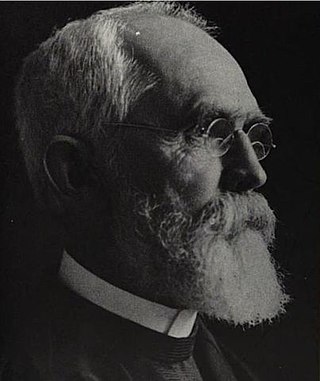
William Porcher DuBose was an American priest, author, and theologian in the Episcopal Church in the United States. After service in the Confederate States Army during the American Civil War, in which he became a chaplain in his cousin's regiment, DuBose served as a Professor, Chaplain, and Dean of Theology at the University of the South in Sewanee, Tennessee. Later he served as Chaplain at Fairmount College in Monteagle, Tennessee and as priest-in-charge at the nearby Chapel of the Holy Comforter.

Dudley McIver DuBose was an American lawyer, Confederate field officer and politician. He rose to the rank of Brigadier General in the Confederate Army during the American Civil War. Afterward, he later served one term in the United States House of Representatives from Georgia, 1871-1873.

The Miles Brewton House is a National Historic Landmark residential complex located in Charleston, South Carolina. It is one of the finest examples of a double house in Charleston, designed on principles articulated by Andrea Palladio. Located on two acres, its extensive collection of dependencies makes it one of the most complete Georgian townhouse complexes in America. The house was built ca. 1765-1769 for Miles Brewton, a wealthy slave trader and planter.

Gabriel Manigault was an American architect.

Rebecca Brewton Motte (1737–1815) was a plantation owner in South Carolina and townhouse owner in its chief city of Charleston. She was known as a patriot in the American Revolution, supplying continental forces with food and supplies for five years. By the end of the war, she had become one of the wealthiest individuals in the state, having inherited property from both her older brother Miles Brewton, who was lost at sea in 1775, and her husband Jacob Motte, who died in 1780.

Peter Manigault was an attorney, plantation owner, slave owner, and colonial legislator native to Charleston, South Carolina. He was the wealthiest man in the British North American colonies at the time of his death and owned hundreds of slaves. He was the son-in-law of Joseph Wragg, the largest slave trader of North America in the 1730s.
Thomas Sutton was the speaker of the House of Assembly of Jamaica in 1691-92 and 1698.
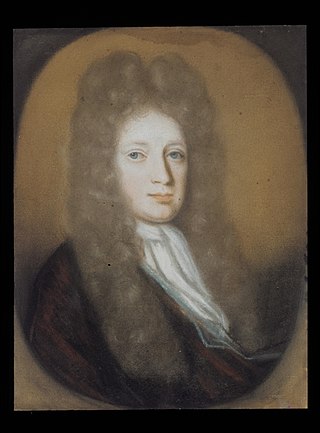
Pierre Bacot (1671–1730) was a prominent French Huguenot planter in colonial South Carolina.

James Henry Ladson was an American politician, wealthy plantation owner from Charles Town and officer of the American Revolution. He served as the Lieutenant Governor of South Carolina from 1792 to 1794, and was a member of the South Carolina state Senate from 1800 to 1804.
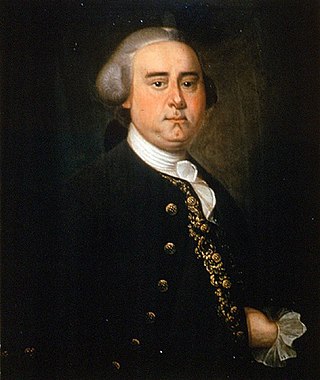
Benjamin Smith was an American slave trader, planter, shipowner, merchant, banker and politician who served as speaker of the South Carolina House of Assembly from 1755 to 1763.
James Henry Ladson (1795–1868) was an American planter and businessman from Charleston, South Carolina. He was the owner of James H. Ladson & Co., a major Charleston firm that was active in the rice and cotton business, and owned over 200 slaves. He was also the Danish Consul in South Carolina, a director of the State Bank and held numerous other business, church and civic offices. James H. Ladson was a strong proponent of slavery and especially the use of religion to maintain discipline among the slaves. He and other members of the Charleston planter and merchant elite played a key role in launching the American Civil War. Among Ladson's descendants is Ursula von der Leyen, who briefly lived under the alias Rose Ladson.
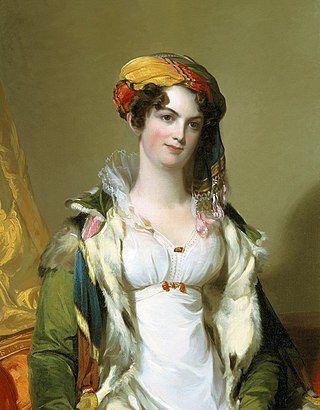
Sarah Reeve Ladson (1790-1866) was an American socialite, arts patron, and style icon. Born into a prominent Charleston family, she was an influential member of the South Carolinian planter class. She was regarded as one of the most fashionable American women of her time and was the subject of various portraits and sculptures.
Joseph Wragg was a politician and slave trader in the Province of South Carolina. Born Chesterfield, Derbyshire, Wragg immigrated to the American colonies where he became a pioneer in the slave trade. During the 1730s, Wragg was the predominant slave trader in South Carolina. The neighborhood of Wraggborough in Charleston, South Carolina is named for him; and two city parks and seven streets in Charleston are named for him and his descendants.

The Ladson family is an American family of English descent that belonged to the planter and merchant elite of Charleston, South Carolina from the late 17th century. The family were among the first handful of European settlers of the English colony of Carolina in the 1670s, where the family quickly became part of the American gentry. The Ladson were large plantation owners and wealthy merchants in Charleston, and owned hundreds of slaves until slavery was abolished in 1865. James Ladson served in the American Revolutionary War and became lieutenant-governor of South Carolina, while his son James H. Ladson was part of the Charleston oligarchy that was influential in launching the American Civil War. The President of the European Commission Ursula von der Leyen, who lived under the name Rose Ladson in her 20s, is a descendant of the family through her American great-grandmother.
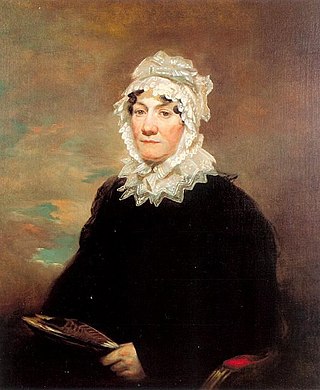
Judith Smith Ladson was an American heiress and socialite who served as the Second Lady of South Carolina. A member of the colonial planter class, she was the daughter of the slave trader Benjamin Smith and the wife of the politician James Ladson, who served as Lieutenant Governor of South Carolina. Through her marriage, she was a member of the Ladson family, one of Charleston's most prominent families.

Elizabeth Wragg Manigault was an American socialite who was prominent figure in colonial South Carolinian society. She was the wife of Peter Manigault, who served as Speaker of the South Carolina House of Representatives and was one of the wealthiest people in British North America.













